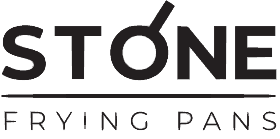How to Make Unleavened Bread Recipe in 30 minutes (Classic and Variations)
In this article you will find a delicious unleavened bread recipe with some variations. This type of bread is used in church rituals but it can also be enjoyed as a snack whenever you desire.
Flat bread can be soft and melt into your mouth. Of course, you may find it in stores too (in the form of Matzo crackers, for example) but nothing compares with the taste and smell of homemade bread. Unleavened bread doesn’t contain yeast so the preparation time is considerably reduced.
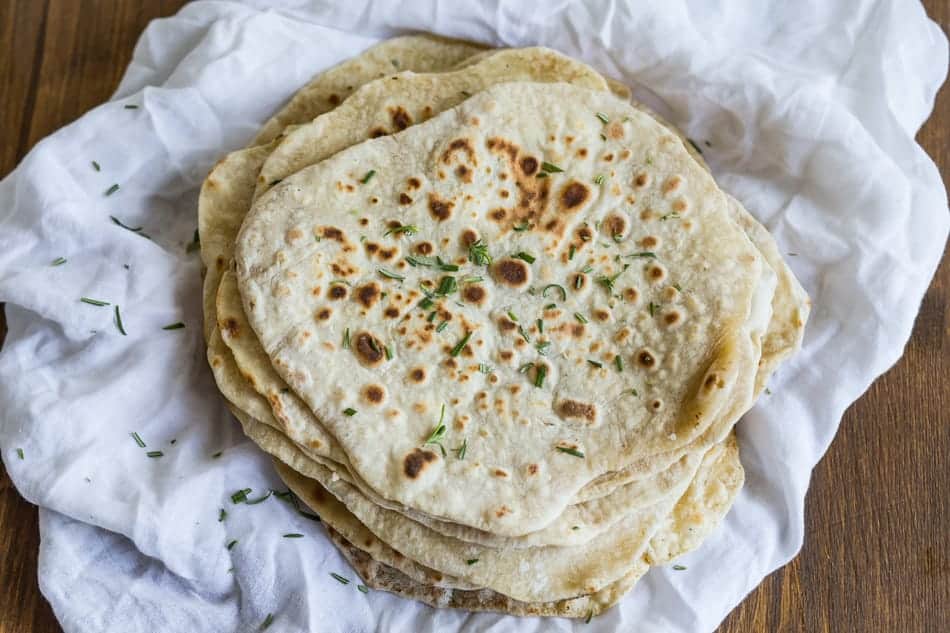
What is unleavened bread?
Unleavened bread is a flat bread which contains no raising agents. It has a great symbolic importance and is known as “Matzah” by the Jewish community.
What is the feast of unleavened bread?
Matzo is served during the Passover, a feast which commemorates the Exodus of Jewish people from Egypt. It was the end of their slavery. The most commonly met opinion is that the name “Passover” comes from the verb “pasach” meaning “He passed over”. This refers to God skipping or passing over the Hebrew houses during the last of the Ten Plagues. He did that by avoiding the houses marked with the sacrificed lamb blood. The Jewish houses were not destroyed so people were able to leave Egypt.
When is the feast of unleavened bread?
Passover is celebrated on the 15th day of the month of Nisan. This is a spring month of 30 days from the Hebrew calendar. It usually falls in March or April in the Gregorian calendar. The celebration lasts for seven days in the Land of Israel while the Hebrews who live worldwide will honor this feast for one additional day.
What does unleavened bread mean?
Unleavened bread recipe contains no raising agents, such as yeast or baking powder. It is simply made with flour, water and salt. The original recipe doesn’t contain any fat either.
Why unleavened bread?
One of the reasons that have to do with not using raising agents for the bread is related the story of the Passover. Back in 1300s BC, Israelites were slaves to the Egyptian Pharaoh. For many decades they went through exhausting labors and were treated with intolerable hate. God sent the Pharaoh a message through Moses: to set His people free. When the Egyptian leader refused to listen, God dropped ten devastating plagues over Egypt which destroyed crops and flocks, leaving them without food. The last of the ten plagues hit on the midnight of the 15th day of the month of Nisan (1313 BC) and killed all firstborn children. However, the houses of the children of Israel were “passed over” because they were marked with lamb blood. That night, Pharaoh decided he was defeated and let the Israelites leave. He actually asked his soldiers to chase them out of his lands. Families had to leave in a great hurry so the bread provisions they baked didn’t have time to rise. They were forced to eat unleavened bread instead.
On the other hand, matzah is equal to faith. It is not enriched with oil, other fats, sugar, honey or additional ingredients. It is simply made with flour and water. Also it is not allowed to rise. These two ingredients are a symbol of humility and submission to God, the two pillars of faith. It could be an explanation to the question “What is unleavened bread?”
To commemorate the Exodus, nowadays Israelites don’t consume any leavened products from the day before the Feast of unleavened bread until the holiday is over. They call products containing raising agents chametz, meaning leavened grains, basically any food which contains a trace of oats, barley, spelt, wheat, rye not kept out of fermentation. I’m talking here also about pasta, cookies, bread, cakes, cereal and pretty much all alcoholic beverages. Not only they do not eat all these foods, but they remove anything that fits this description from their houses during the spring cleaning before the Passover.
The ideal unleavened bread is shmurah matzo made from grain intendedly supervised so no fermentation occurs. Basically, this would be the only one suitable for eating on the first night of the Feast of unleavened bread.
How to make unleavened bread?
Unleavened bread recipe is quite easy to prepare. You will only need water, flour and a bit of salt if you want to stick with the authentic version.
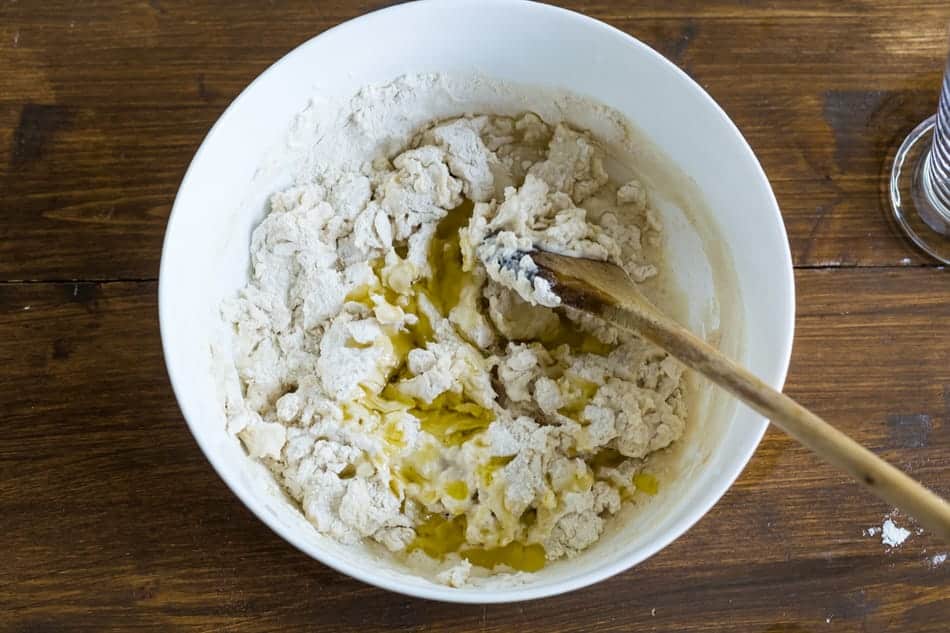
First, mix the salt and flour and whisk well so everything combines. Pour the water and knead for about five minutes. Divide your dough into small balls. Lightly flour the working surface and roll out the balls. If you don’t want round matzos, just roll out the whole dough into a rectangular shape and cut it into small square crackers.
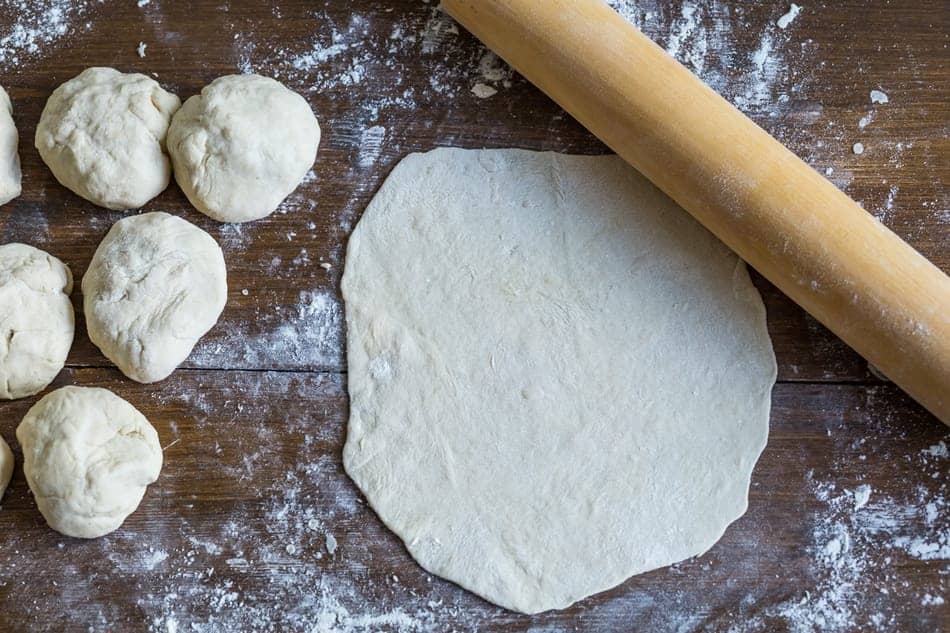
In case you are not supposed to stick to the Jewish regulations, feel free to add some oil to the dough before you start kneading.
How to make unleavened bread for the Lord's supper?
There are other variations for the unleavened bread recipe because it is also used as a communion bread. Scriptures say that Jesus himself passed the unleavened bread to his Apostles when they met for the Last Supper before His crucifixion. Leavened products were forbidden for that period, commemorating the Exodus of the Israelites from Egypt.
Nowadays, communion bread can be made with milk, honey, eggs and oil, apart from flour. The only thing that remains the same is the fact that it doesn’t contain any leavening agents.
Flavors for unleavened bread
Supposing you want to take your flatbread a step further, my advice is to add some flavors to the dough. You may try to do this with a few chopped rosemary sprigs, some dried oregano or basil. An appetizing smell will come up from your skillet or oven and I can guarantee you won’t be able to wait for the bread to cool down.
Garlic is also a great addition and so are other spices such as paprika or garam masala.
There are also variations that start with the already cooked bread.
Combine some crushed garlic with olive oil and brush it over the bread. Sprinkle a mix of dried Italian herbs on top and bake for about ten minutes at 350F(180C).
Spread a generous amount of grated parmesan over the bread. Bake at 350F(180C) until the cheese melts completely.
Melt a few tablespoons of butter and pour on top of the bread. Stir together cinnamon and sugar and sprinkle evenly over the melted butter. Place the bread in the oven and bake for about ten minutes at 350F(180C) until the topping begins to bubble.
How to bake unleavened bread?
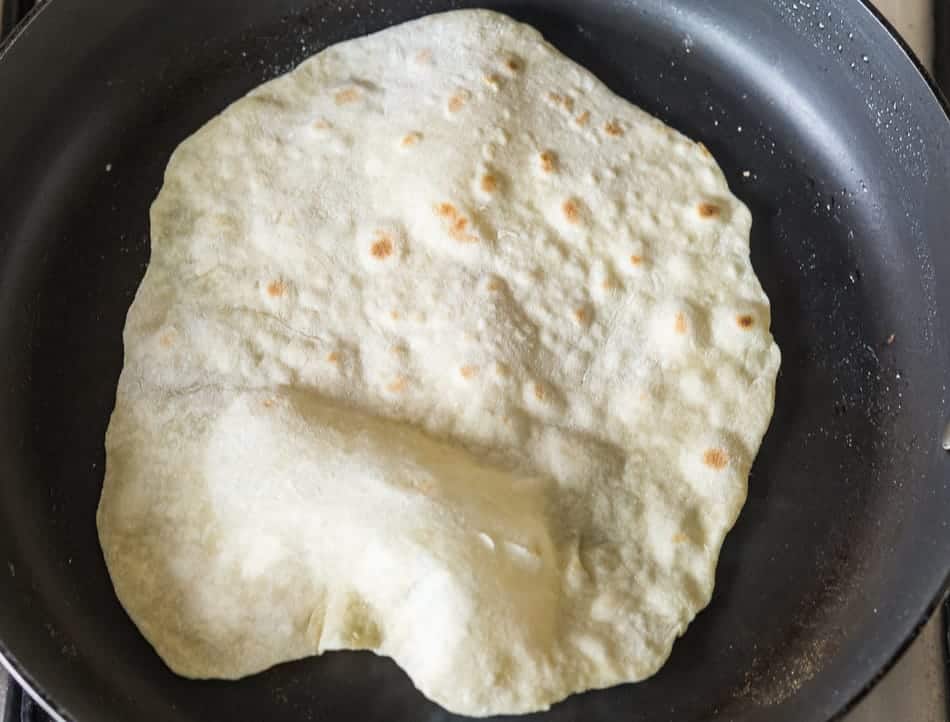
You can use a baking sheet to bake the matzos. Depending on how large they are, you will be able to bake more or less at a time. The cooking time is around 3-4 minutes on each side so you will need to flip them over so the bread will bake evenly.
Another option is to cook the small breads in a non-stick skillet for about 2 minutes on each side.
Either way, the taste will still remain delicious.
How to store unleavened bread?
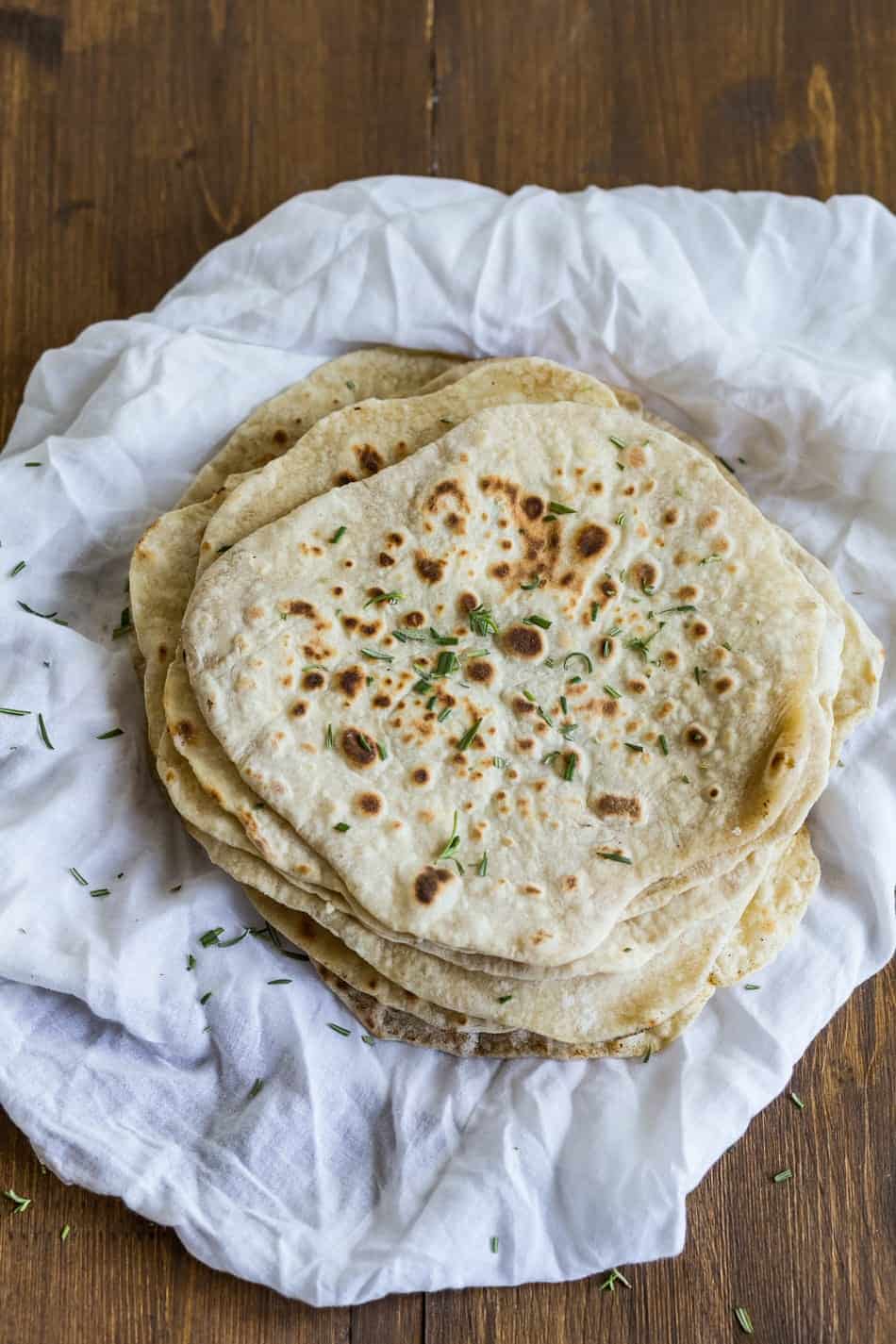
You can keep it at room temperature for three to four days covered with a clean cloth. It lasts longer in the refrigerator, for up to one week.
You can also make the dough ahead. It keeps well in the fridge for three days but it is not recommended if you are following strict religious regulations because the moisture acts as a leavener for the dough. Roll out the rounds so they will be ready to cook and separate them will parchment paper or wrap each roll with plastic foil.
Leavened vs. Unleavened bread
These two types of bread are basically similar from nutrition point of view. Leavened bread contains raising agents, such as yeast, baking soda or powder. Leavening agents make the bread fluffy because they cause the dough to rise and bubble before baking. Besides from these agents, other ingredients are similar.
People often choose the unleavened version because of religious regulations. A different reason to go for flatbread is candida albicans, a fungus which causes vaginal yeast infections. The treatment requires to remove all foods containing yeast, such as bread or beer.
As a good side, try our eggless banana bread recipe (quick, easy and vegan), 4-banana bread recipe, yummy brioche bread pudding, cinnamon roll apple pie, or fluffy french toast.
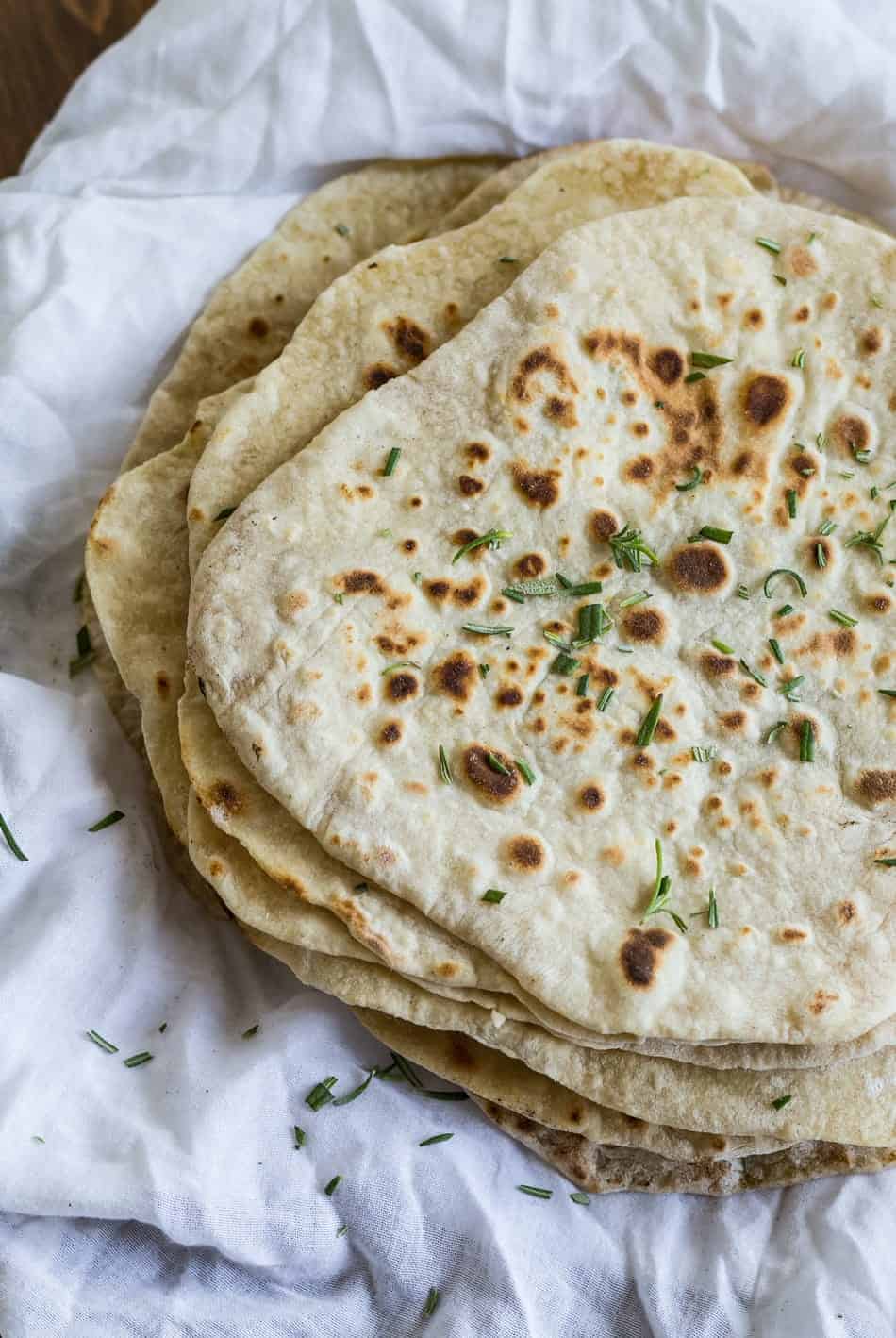
Equipment
- Bowl
- non-stick pan
- roller pin
- Stove
Ingredients
- 2 cups all-purpose flour
- 1 cup cold water + more if necessary
- 4 tbsp olive oil
- ½ tsp salt
Instructions
- In a large bowl, combine the salt and flour.

- Add the water and mix with a fork until the flour is wet. If it doesn’t come together, add small splashes of water until everything begins to bind. Stir in the oil.

- Now it’s the time to start using your hands. Place the dough ball onto the working surface, previously floured. Knead for about five minutes until it becomes elastic and silky.

- Divide the dough into 6-7 pieces that have the size of a larger golf ball.

- Flour again the work surface. Grab a rolling pin and roll out the dough. Roll, spin the dough and then roll again. Repeat until you get a ¼ inch thick piece of dough.

- Place a slightly greased non-stick pan over medium heat and wait until it’s hot.
- Take one piece of dough and put it in the pan. Flip it over after 30 seconds. This way you will get an evenly toasted bread on both sides. After 30 seconds, flip it over again. You will notice that little air pockets will begin to appear in the bread. Now you can flip it over the third time. The bread seems puffed up now, it is time to press gently so the interior of the matzo is cooked too. It should take about 3-4 minutes in total to cook one flatbread.

- Repeat for the remaining dough balls.
- Keep the bread stacked and warm between the layers of a clean cloth.
- Enjoy!
Notes
- Now that you have a detailed answer for the question “What is unleavened bread?”, you should know that it can be served as it is or you may enjoy it as pita bread for Greek Gyros, naan for Indian curries or as a wrap and fill it with whatever your taste buds desire.
- This unleavened bread recipe works very well with gluten free flour mixes. It is possible you will need more flour to roll it out, just add until the dough doesn’t stick to the working surface. The texture of gluten-free flour rolls will be different, maybe a bit chewy. Also the shape may differ because the dough is not that elastic and you won’t be able to roll it into a round. Almond flour is not an option for this recipe, it is possible that the dough won’t bind in the right way.
- If you want more fibers in your bread, use whole wheat flour. This type of flour requires more water so add a splash at a time until the dough comes together.
- For a different taste, use vegetable or whole milk, your bread will be sweeter. Also olive oil may be replaced with melted butter. Even coconut oil works great if you want to stick with the vegan formula. Vegetable milk and coconut oil are great alternatives to the authentic recipe.
- Depending on the way you want to use this bread, you may cook it to be crispier or softer. On the assumption that you want a crisp bread to dunk it into a curry or stew, roll it thinner and cook on higher temperature. When you plan to use it as a wrap, you will need a softer and pliable texture. Keep the temperature lower and place the bread between paper towels after removing from heat. This will create a bit of moisture which will help it remain flexible.
- Give this recipe a try and I can guarantee that you won’t be disappointed. It is delicious and easy to make. You will certainly cook it more than once.
